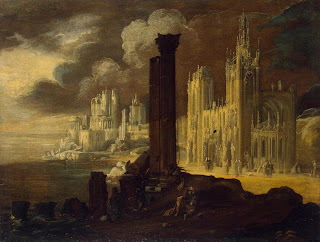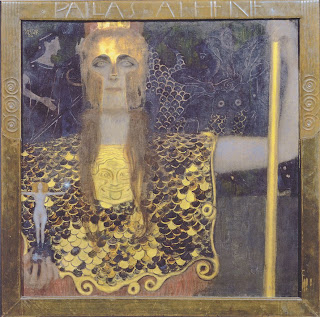Old school dungeon exploration play is commonly organized as one delve per session. It is expected that PCs will return to town between sessions. This is advantageous for a number of reasons. For one, continuity of players is not required (something that is particularly difficult to achieve if your players are adults with jobs, families, and other commitments). This style of old school play is sometimes maligned as “the 15 minuted adventuring day,” but if not exaggerated this structure naturally fits the requirements of the gaming session. However, a problem occurs when the session is drawing to a close but the PCs are nowhere near the surface.
There are several ways to approach this problem. One is to hand-wave it and just assume everyone is able to make it out. This may run into logical problems depending on the obstacles that the party has navigated, but can usually work. Another well known approach is The Triple Secret Random Dungeon Fate Chart of Very Probable Doom, which is basically a table of (mostly bad) outcomes if PCs are unwise enough to not ensure their own exit prior to the session end. I have also considered a “dungeon escape” saving throw (maybe the PC can choose their most advantageous save number). Failure would indicate death occurred on the way out.
The Diablo series of video games has a common item called a scroll of town portal. This item allows adventurers to return to town from any area in a dungeon once they have exhausted their carrying capacity. The portal also allows (one way) return travel so that the adventurers can proceed exploring the dungeon from where they left off. Here is a version of the town portal scroll with flavor appropriate to a tabletop RPG.
A scroll of return is part of a teleportation ritual commonly employed by magic-users. The ritual has three parts: first, the scroll of return must be scribed and a circle of return must be prepared. The third part of the ritual is the casting of the spell inscribed on the scroll. The circle of return must be prepared under the gaze of the sun. Thus, it can only be constructed on the surface under open sky. Once these two elements are created, they both radiate magic to detection spells.
Because the gaze of the sun is necessary to the ritual, the current weather is important. I suggest using a standard 2d6 reaction roll to determine the weather if you don’t already have a more complicated system (interpreted based on the season). For example, bad weather might only occur on an “immediate attack” (2) result during the summer, but during the winter might occur on all reactions neutral or worse.
The ritual’s potency is measured by level. A magic-user may create a scroll of return of level equal to or less than their class level. The cost of the components required for the ritual is 100 GP per level (like Holmes scroll creation rules). No matter the level, the creation of the circle and scroll take one day. The scroll only remains potent for a number of days equal to the scroll’s level, and the range of the teleportation is limited to 6 miles per scroll level. The ritual’s caster can sense if they are out of range, and going out of range does not destroy the magic (the scroll may still be employed when the magic-user comes back within range). A magic-user may prepare a lower level ritual if desired (for example, a level 5 magic-user may prepare scrolls of return of any level between 1 and 5).
When the ritual’s magic has expired or is completed successfully, the scroll crumbles to dust. The circle remains and looses its ritual power (and value in terms of components) but still functions as a magical signature that can be identified by other magic-users if not later destroyed. When completed, the ritual returns the magic-user (and companions) to the circle of return. Intoning the spell on the scroll requires a full turn (10 minutes within the game world) of undisturbed concentration. If interrupted, the ritual is not ruined, but the magic-user must start over. Companions to be transported with the magic-user must stand nearby and unwilling creatures may not be transported (though unconscious ones can).
If the circle of return is disturbed, the ritual is disrupted, and the scroll will crumble to dust. For this reason, circles of return are often well hidden or protected. Battlements atop a magic-user’s tower are popular locations for established wizards, but less powerful magic-users may have to make due with isolated glens. A skilled diviner can user either end of the ritual (scroll or circle) to locate the other end. Scrolls of return may be found as treasure. Who knows where the party will end up if the ritual is completed? Maybe some form of magic research could be undertaken to determine where the scroll leads or perhaps such scrolls must be approached blind by those who did not participate in fabrication.
Some sages have speculated that the ritual magic draws power from the sun, and that the slow darkening of the sun over the past thousands of years has been caused by the greed of magicians.
Some variations: if you want the creation to be less fiddly, you can ignore the bit about the weather (I am, however, quite fond of using a reaction roll to determine the weather). You could also allow a one-way return as Diablo does. Perhaps other classes are able to use the scroll once created, not just magic-users (much like scrolls of protection).
















